How to tell a crow from a jackdaw!
The corvids have much to crow about when it comes to intelligence having outsmarted primates in some tests.
There are 8 species (sort-of) resident in the UK.
- Raven
- Carrion Crow
- Hooded Crow
- Rook
- Chough
- Jackdaw
- Magpie
- Jay
Although some, like the magpie are much easier to distinguish from the others, sometimes you can find yourself looking at a corvid and wondering which one it is.
Below, I’ve tried to give the identifying feature just ahead of the name so you have something to look out for.
Raven
The huge raven (Corvus corax) is largest of all, with a wingspan up to 1.5 metres, and much more common in upland and coastal regions. Its honking call and wedge-shaped tail usually give it away and they are usually in pairs or groups. They can extend a little beard beneath the chin.
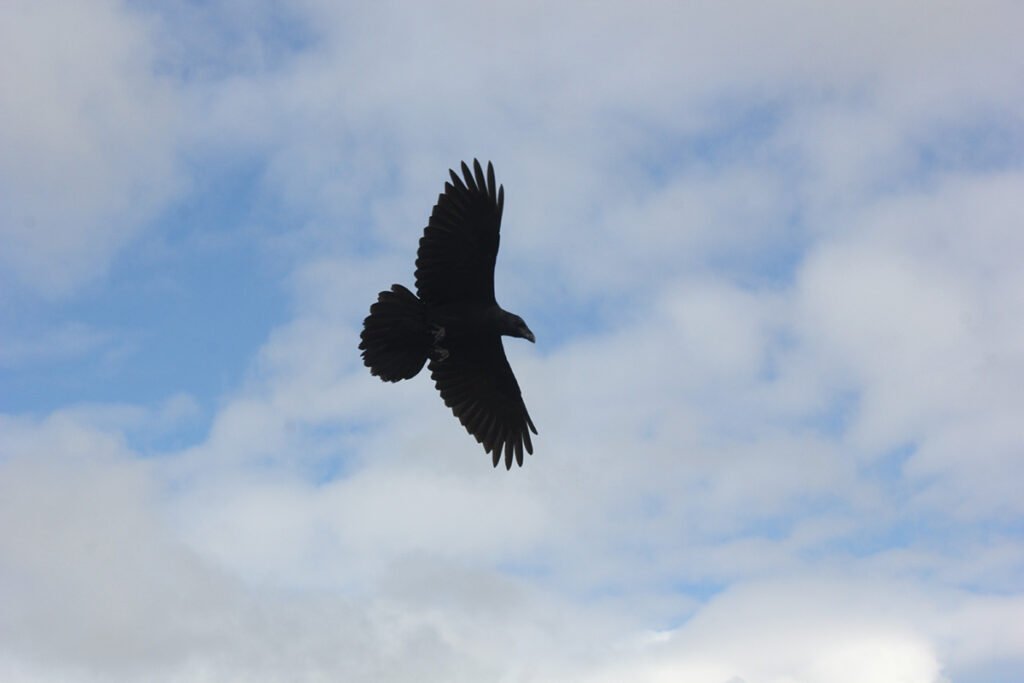
Carrion Crow
The black and almost featureless carrion crow (Corvus corone corone) is the next down in size with a wingspan up to 1 metre sometimes. They tend to work in pairs but are usually noticeably smaller than a raven, with an average length tail and a caw, caw, caw call. The wings are less long ‘fingered’ than the raven and it is much more common.
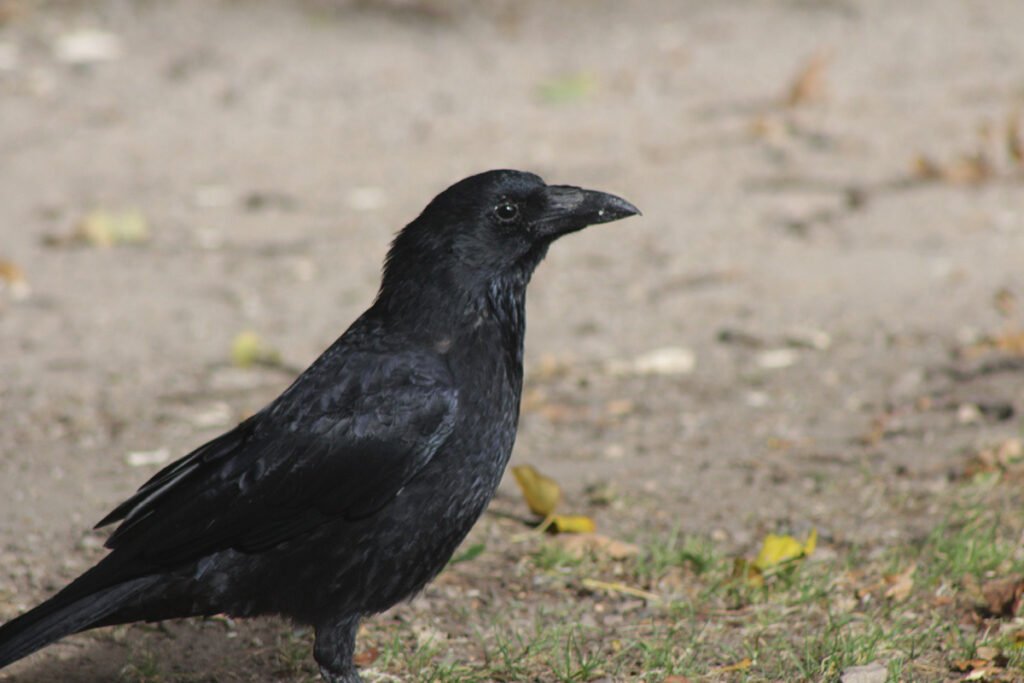
Hooded Crow
The patchy black and grey hooded crow (Corvus corone cornix) is not really another species but it looks like one. It has a grey back and belly and is restricted to northern Scotland and Ireland where the carrion crow is almost absent.
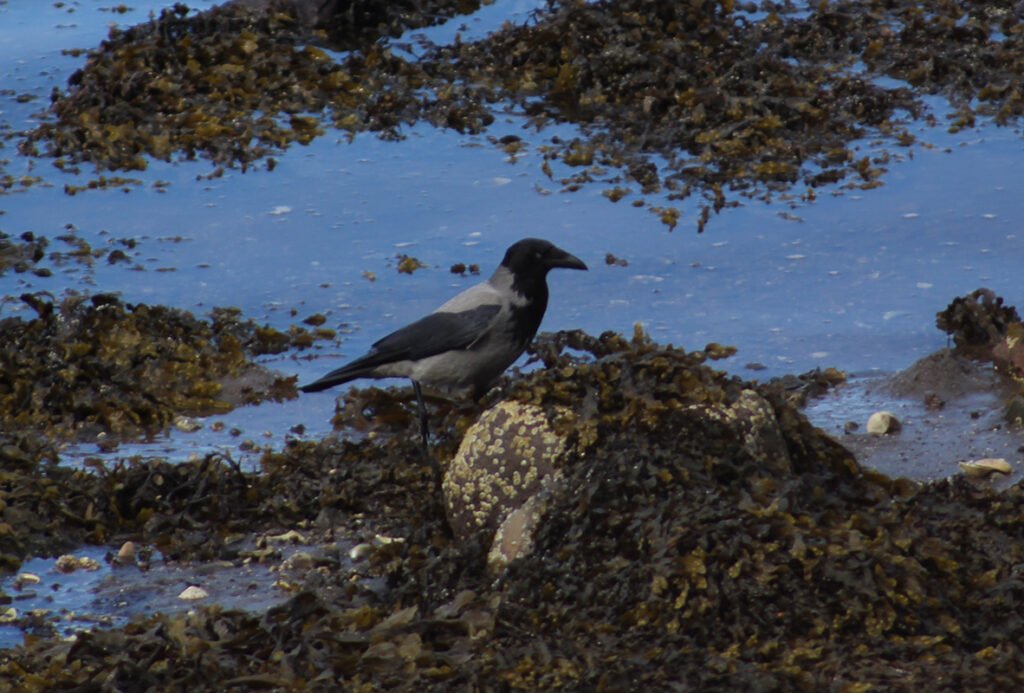
Rook
The bare-faced rook (Corvus frugilegus) is slightly smaller than the crow but indistinguishably so in flight. You might notice that it is more slender and angular and the tail looks long in comparison to a crow, but they are usually in large noisy groups. Being gregarious compared to crows almost solitary appearance. A closer look reveals rough bare grey skin around the base of the beak ,which no other member of the corvid family has. Annoyingly very young birds don’t have it. The beak is slightly longer and more curved than crows on average but there is much variability.
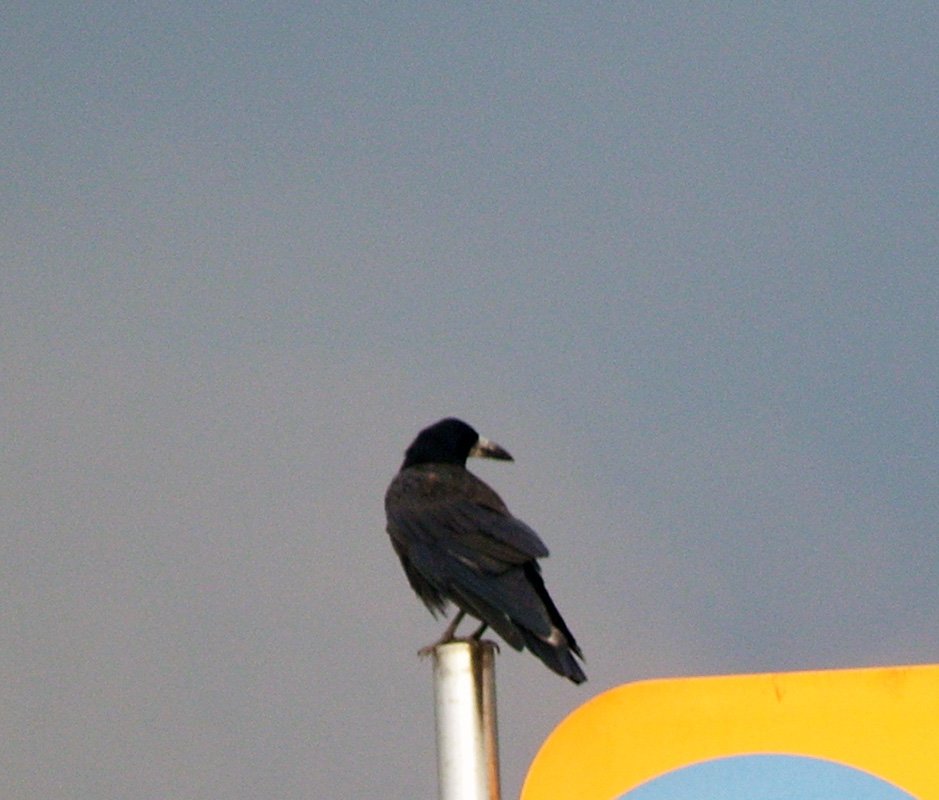
The feathers around the legs are quite long so when they are walking, rooks look like they have baggy clown trousers on. They live in huge communities, usually wintering in one place in combined communities and then breaking into smaller groups and migrating a short distance to their nesting sites. Where the groups of large nests built of twigs give them away. They repair their old nests every year. Rooks as I understand it are the four and twenty black birds who were baked in a pie… rook pie. The call is crow like but hoarse and more insistent and talkative than the crow, who only speaks when necessary.
Chough
The red-beaked, red-legged chough (Pyrrhocorax pyrrhocorax) is a little smaller than a rook with a wingspan up to 90cm. They are noisy and sociable but nest on secluded cliffs and are rare or absent over most of the UK. Occurring only on the Welsh, Scottish and Cornish coasts. The slender curved beak and legs are bright red and the wings usually show fingers like a raven so they cannot really be mistaken for any other bird. The call will tell you who they are too. They sound a bit like echoey gunshots in an old western movie… ptew.
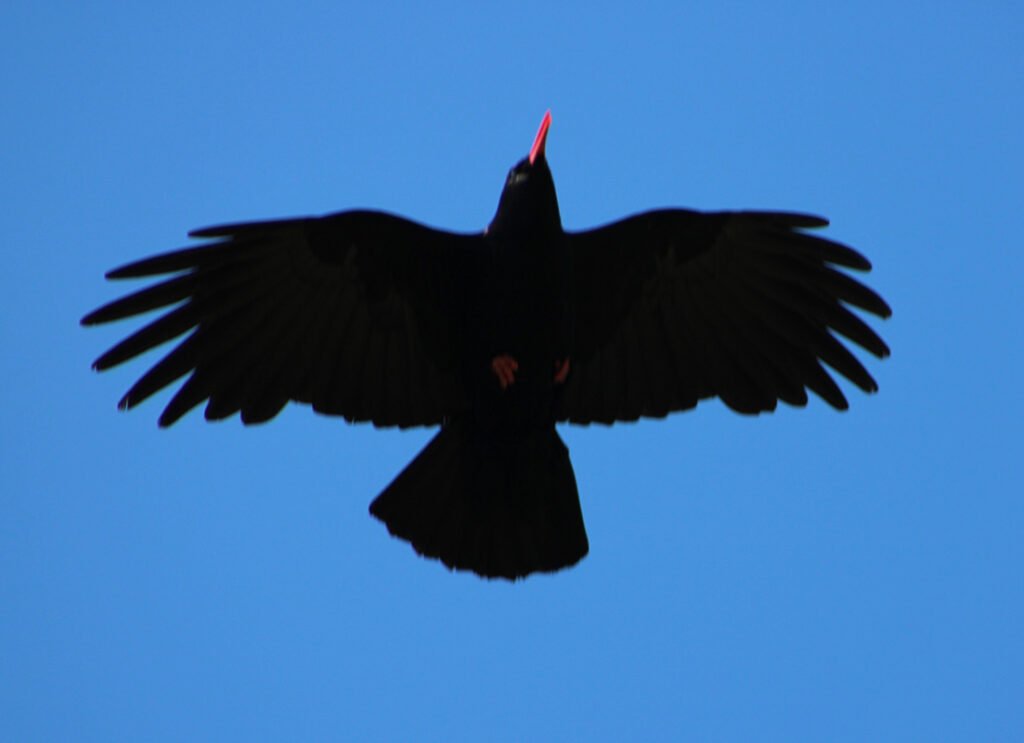
The remaining three crows are smaller and noisier still.
Jackdaw
The grey necked, pale eyed jackdaw (Corvus monedula) is the next down in size with a 70cm wingspan. They are communal too but like to nest in holes rather than out in the open. Chimneys are a favourite. All the other crows above have quite dark brown eyes so the pale blue or straw coloured eyes and the grey nape of the jackdaw easily give its identity away. The call is almost a cluck but with a slight tunefulness to it… tchaa-chaa, tchaa-chaa. Often in groups they all cluck together and it sounds like 20 squeaky toys have been thrown in the air and are landing a few fractions of a second apart.
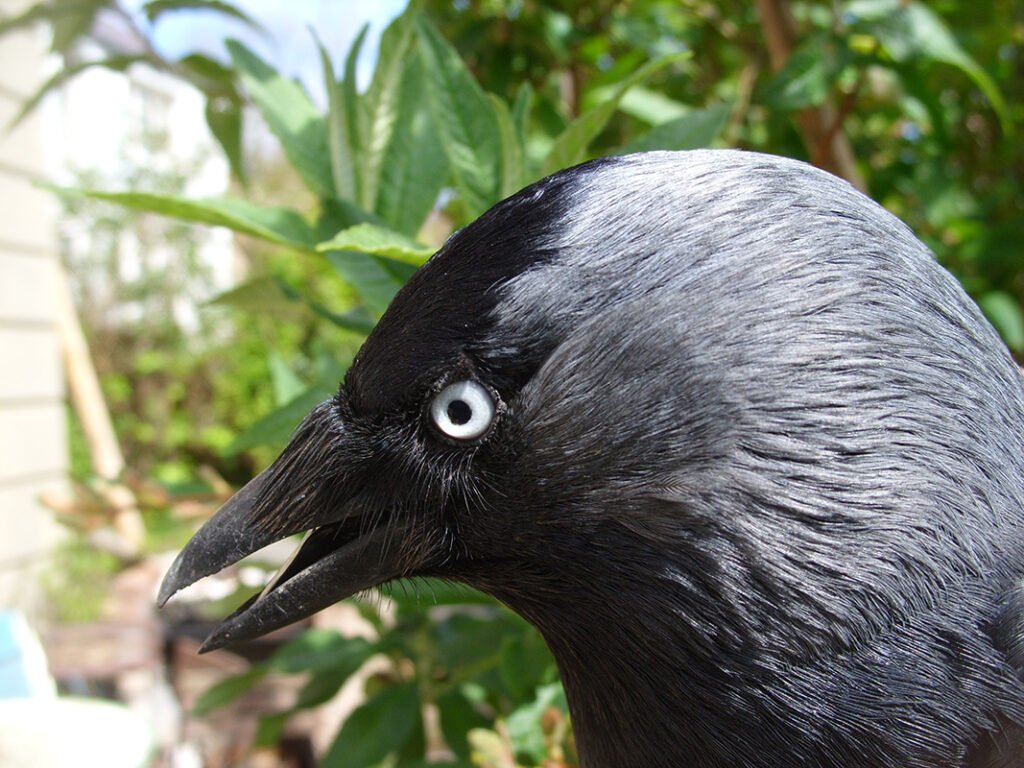
Magpie
The black and white, long tailed magpie (Pica pica) is difficult to mistake for any other bird in the UK. Its wingspan is only slightly smaller than the jackdaw’s at about 55 to 60cm.
They build large nests of twigs with domed roofs and make a lot of noise with their chattering kek, kek, kek call. They are unpopular with gamekeepers and bird lovers as robbers of nests but most of their food is insects, seeds and carrion.

Jay
The pinkish and black, blue-winged, white rumped jay (Garrulus glandarius) is the smallest of our corvids with a wingspan of just over 50 to 58cm. They are usually not far from woods and trees and are very secretive drawn out of hiding in the autumn by their love of finding and hiding acorns. Usually heard and not seen jays seem to argue for log periods hidden in the woods with rasping skek-skek-skek calls often drawn out skeeeeeeeek, skeeeeeek skek. What they are often doing, is not arguing but warning each other of your approach!

I see them as pink, to others they are some shade of brown but only wood pigeons really have a similar a colour and they are larger and have no white rump to display as they fly off. Like jackdaws, and unlike other corvids, jays have pale eyes. The metallic blue wing feathers are among the most beautiful things, to my eyes, in nature.
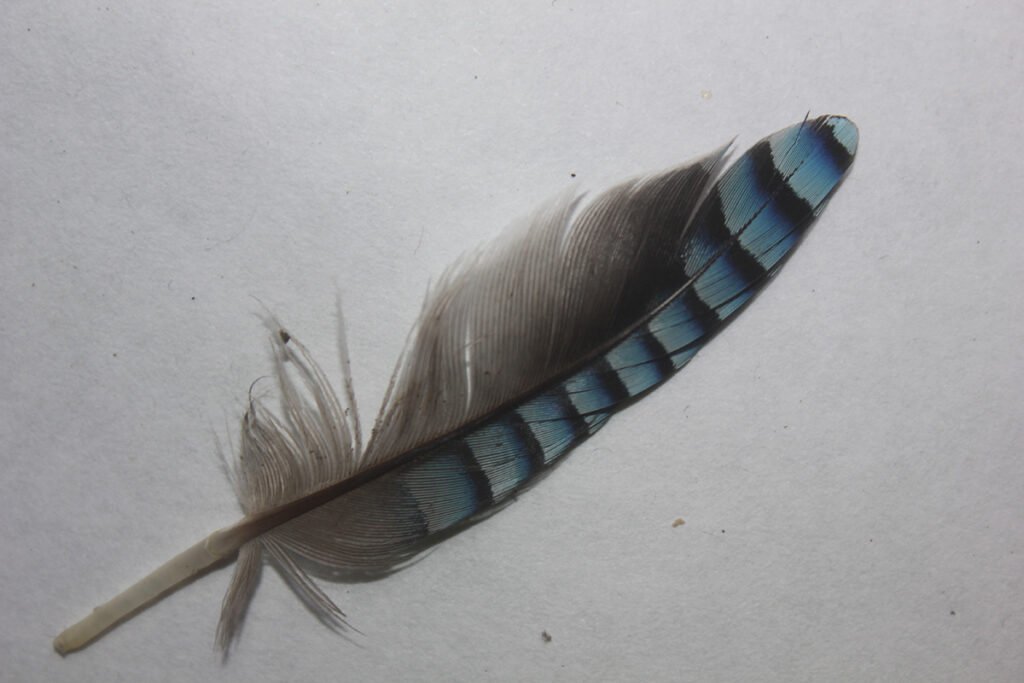
Corvid ID
If you’d like an ID guide to help you identify, which crow it is you’re seeing, we now have poster available
There is also a free colouring sheet to download here



